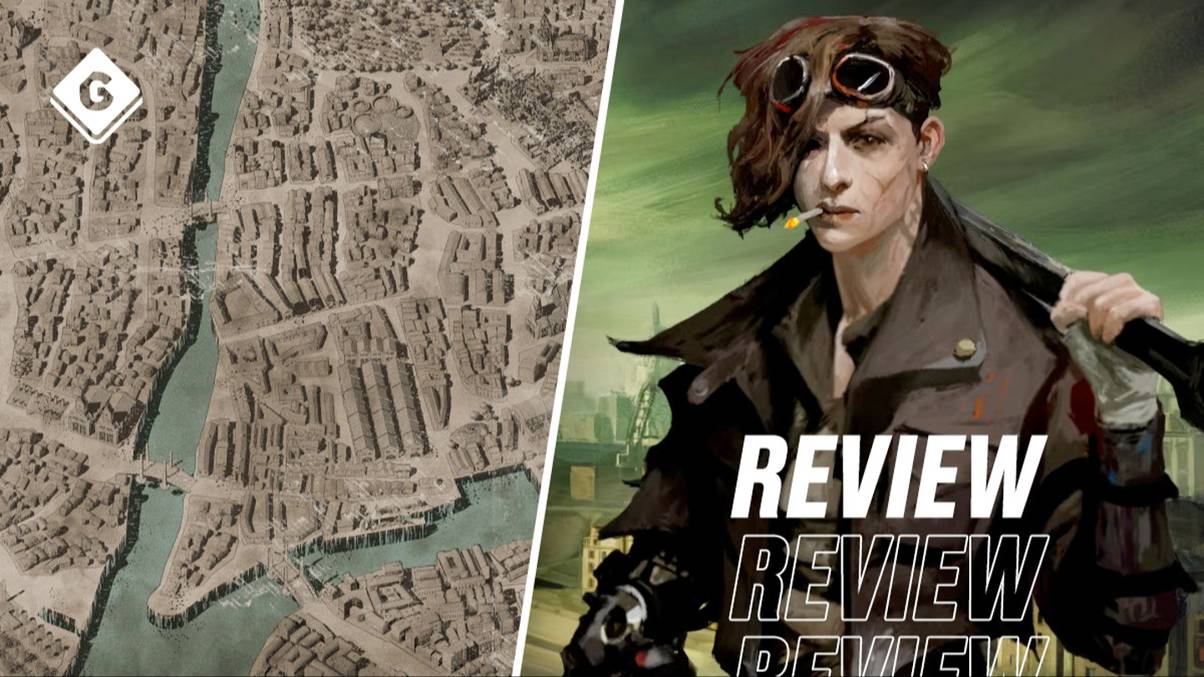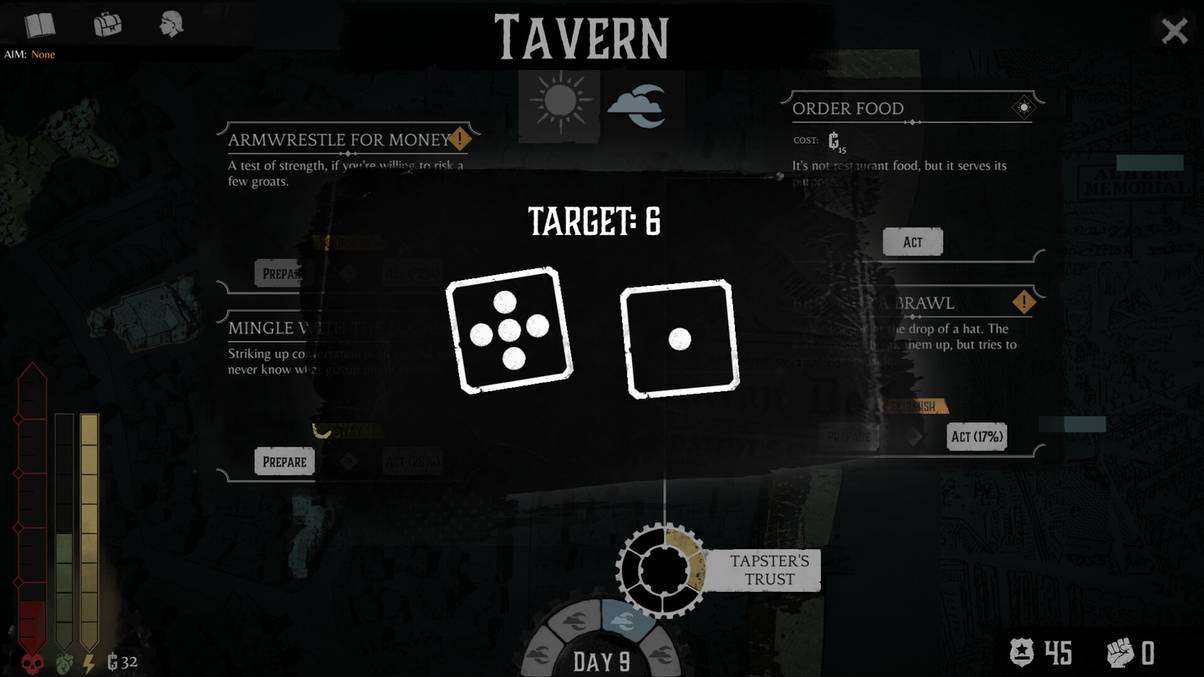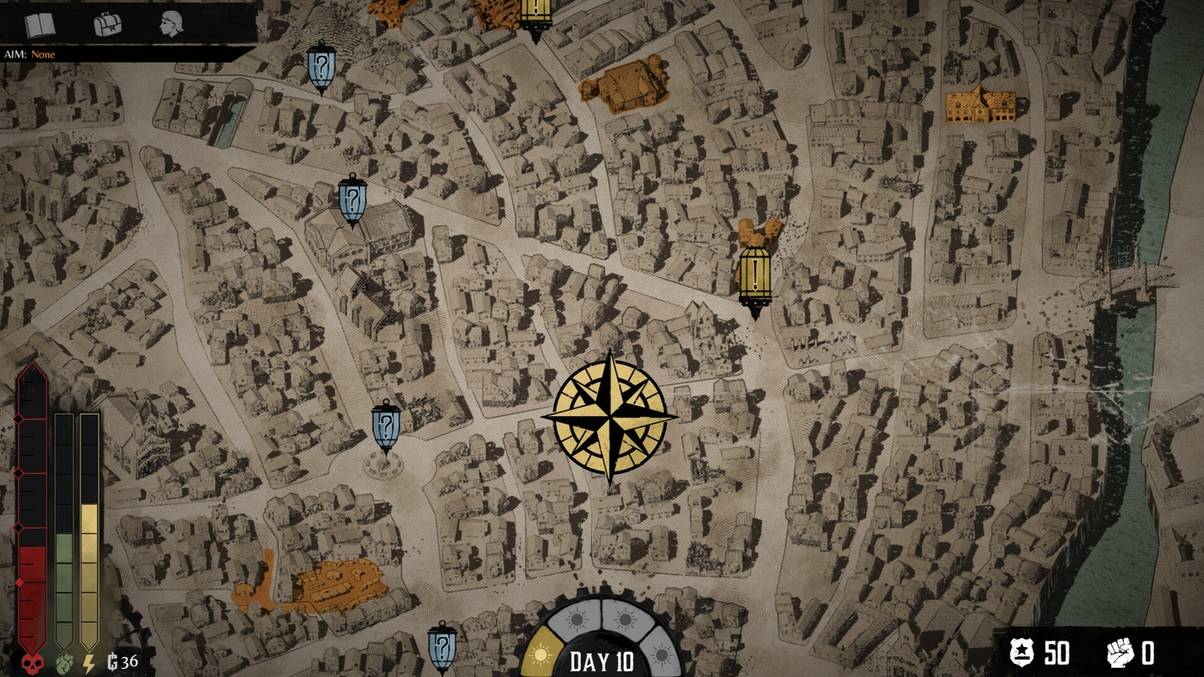
In its opening hours, Duskpunk does not shy away from pulling you into its bleak setting. Set in the seedy underbelly of Dredgeport, a steampunk city characterised by its tall masonry buildings, Dickensian architecture and cramped dirty streets, you must traverse the metropolis with one goal in mind: survive.
Dredgeport is very much evocative of the grim dystopian European-inspired cities as seen in Half-Life 2’s City 17 or Dishonored’s Karnaca. Cities that feel like we’re seeing them after major events have dramatically shaped them.
As a role-playing game, your character is given only a limited amount of backstory. It’s quickly established that you’re an ex-soldier who was mistaken for dead and shipped back in a pile of corpses for processing. After narrowly escaping the city guards, you find yourself in the guts of the city with nothing but the clothes on your back. Where do you go from here? How do you interact with the locals of Dredgeport? And what is your ultimate goal? Revolution, or control?
Duskpunk gives you the opportunity to forge the answers to these questions through its impeccable character-building. The game’s tabletop RPG inspiration is very much apparent here, sporting character sheets with various skills and dice rolls that determine the outcome of every action.

There are six skills in the game which can be levelled up by completing various aims and quests. The more proficient you are in a certain skill, the more likely you are to pass a check. For example, having a high Sneak skill will give you an advantage when it comes to being stealthy, whereas having a low Sway skill makes it more difficult to persuade other characters.
As is usually the case with RPGs, investing in only a few skills becomes ideal here, because most situations usually allow you to tackle them via different methods. One potential questline has you allying yourself with a group of revolutionaries, where you’re tasked with sabotaging a military base. Do you take advantage of your high sneak skill to slip in unnoticed, and sabotage it within? Or do you attempt to use that silver tongue to trick the guards into divulging secrets? Or perhaps you’re a big strong lad, and can muscle your way through the front gate.
Duskpunk’s dedication to giving you different scenarios and outcomes is a great way of converting its obvious tabletop inspirations into a virtual format. You don’t control a player avatar around an explorable world in the same vein as Disco Elysium, but instead move your cursor around a 2D map of Dredgeport, choosing your next action.

The game has an eight-phase day/night cycle, where you first explore the map during the daytime and can do a maximum of four actions, before night sets in and you can do a further four more actions. Your interactions with the world change depending on the time of day, with certain opportunities only open to you at certain times. It gives the game a great sense of progression, where you really have to plan your day out each morning to ensure you’re making the most of your time.
It’s beneficial to spend your days and evenings advancing the various quests you have ongoing, especially as leaving some of them uncompleted can make them more difficult to finish if you get to them later on, but you also need to keep an eye on the different metres that your character has. You have one for health, one for stamina, and one for stress, and letting them build up to their maximum or minimum threshold comes with adverse consequences, including potentially breaking one of your skills.
For example, stress is managed by taking Solace, a drug in the Duskpunk universe that helps keep you calm and level-headed. It can dramatically reduce your stress if you take it before you go to sleep at night, but it’s also outlawed by the government of Dredgeport, so acquiring a vial of Solace also comes with a high price. It’s a great small example of Duskpunk’s worldbuilding also informing the gameplay. The narrative surrounding Solace can inform your decision to become a revolutionary or an agent of the government, but it’s also a gameplay system that you need to keep an eye on.

As Duskpunk is a text-heavy RPG though, it really boils down to how good the writing is as to whether you’ll enjoy it or not. The story deals with various themes told from a working-class perspective. Characters are shown to be desperate members of society who are forced to steal, fight, and beg to survive.
Its angry anti-authoritarian tone accurately depicts the struggles of everyday people who fight for a better future. You can almost feel how strongly the words come off the screen. The state of Dredgeport is never delivered in black-and-white, and characters are shown to have all shades of grey. It understands the work that goes into revolutions; the sacrifice, the blood, sweat, and tears. This is a game where it’s incredibly easy to get attached to the characters, to the point where your heart will be pounding against your chest when their lives are at stake.
By the time the game came to its conclusion, I was left with an overwhelming yearning for a better future, and a feeling that that is something wholly achievable. Duskpunk is the kind of game that makes me feel hope.
Pros: Gorgeous art style, great writing, choices that feel like they matter
Cons: Limited controller support
For fans of: Disco Elysium, Citizen Sleeper
9/10: Exceptional
Duskpunk is out now on PC. A review code was provided by the publisher. Read a guide to our review scores here.


